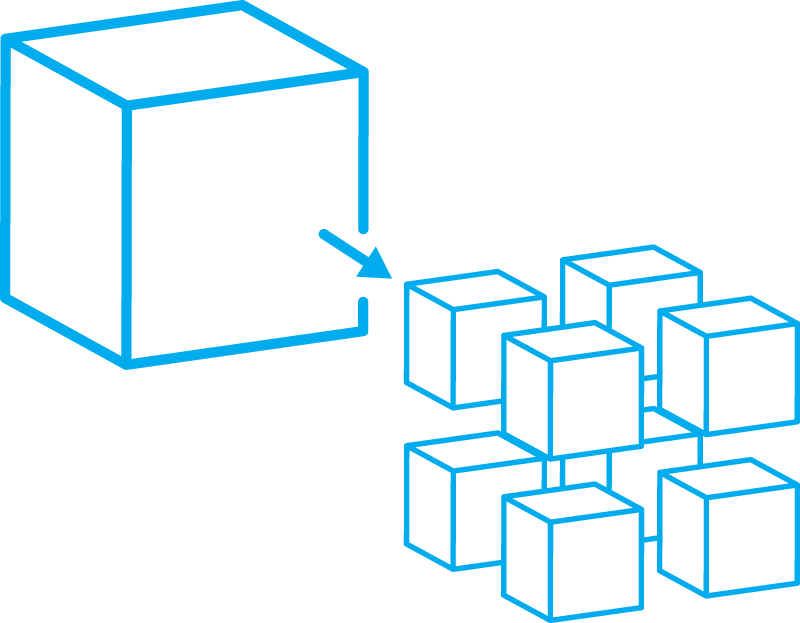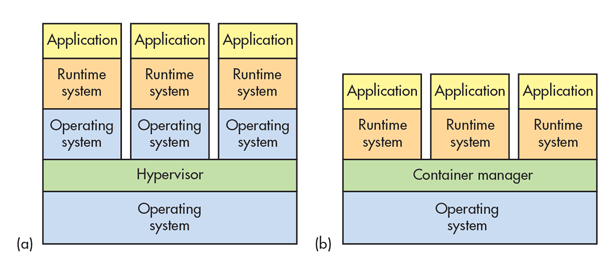

MicroServices Architecture (MSA) & Containerization
What are microservices?
 Microservices, aka Microservice Architecture, are an architectural approach to building applications. As an architectural framework, microservices are distributed and loosely coupled, so one team’s changes won’t break the entire app. The benefit to using microservices is that development teams are able to rapidly build new components of apps to meet changing business needs.
Microservices, aka Microservice Architecture, are an architectural approach to building applications. As an architectural framework, microservices are distributed and loosely coupled, so one team’s changes won’t break the entire app. The benefit to using microservices is that development teams are able to rapidly build new components of apps to meet changing business needs.
Microservices are an architectural approach to building applications. As an architectural framework, microservices are distributed and loosely coupled, so one team’s changes won’t break the entire app. The benefit to using microservices is that development teams are able to rapidly build new components of apps to meet changing business needs.
A way to build apps, optimized for DevOps and CI/CD
What sets a microservices architecture apart from more traditional, monolithic approaches is how it breaks an app down into its core functions. Each function is called a service, and can be built and deployed independently, meaning individual services can function (and fail) without negatively affecting the others. This helps you to embrace the technology side of DevOps and make constant iteration and delivery (CI/CD) more seamless and achievable.

Think of your last visit to an online retailer. You might have used the site’s search bar to browse products. That search represents a service. Maybe you also saw recommendations for related products—recommendations pulled from a database of shopper preferences. That’s also a service. Did you add an item to an online cart? You guessed it, another service.
So, a microservice is a core function of an application and it runs independent of other services, but a microservices architecture is about more than just the loose coupling of an app’s core functions—it’s about restructuring development teams and interservice communication in a way that prepares for inevitable failures, future scalability, and new feature integration.
How is this achieved? By adapting the basics of a service-oriented architecture (SOA) to deploy microservices.
What Is Containerization?
 Containerization involves bundling an application together with all of its related configuration files, libraries and dependencies required for it to run in an efficient and bug-free way across different computing environments. The most popular containerization ecosystems are Docker and Kubernetes.
Containerization involves bundling an application together with all of its related configuration files, libraries and dependencies required for it to run in an efficient and bug-free way across different computing environments. The most popular containerization ecosystems are Docker and Kubernetes.
Containerization reduces wasted resources because each container only holds the application and related binaries or libraries. By allowing more containers in the environment without the need for more servers, containerization increases scalability anywhere from 10 to 100 times that of traditional VM environments.
The difference between containerization and virtualization
Containerization is closely related to virtualization, and it often helps to compare and contrast the two in order to get a better understanding of how containerization can help organizations build and run applications.
Containers, unlike virtual machines (VMs), do not require the overhead of an entire operating system (OS). That means containerization is less demanding in the hardware department and needs fewer computing resources than what you’d need to run the same applications on virtual machines.
Organizations could even opt to share common libraries and other files among containers to further reduce the overhead. Sharing of these files happens at the application layer level, where VMs run on the hardware layer. As a result, you can run more application containers that share a common OS.

VMs are managed by a hypervisor (aka virtual machine monitor) and utilize VM hardware (1) while containerized systems provide operating system services from the underlying host and isolate the applications using virtual-memory hardware or (2) the container manager provides an abstract OS for the containers. This method eliminates a layer and in doing so, saves resources and provides a quicker startup time, when necessary.
Why use containerization?
There are a few reasons why organizations decide to use containerization:
- Portability: You can run the application on any platform and in any infrastructure. Switch to a different cloud supplier? No problem.
- Isolation: Mishaps and faults in one container do not carry over to other containers. This means maintenance, development, and troubleshooting can be done without downtime of the other containers.
- Security: The strict isolation from other applications and the host system also results in better security.
- Management: You don’t have to think about the effects on other applications when you update, add further developments, or even rollback.
- Scalability: Instances of containers can be copied and deployed in the cloud to match the growing needs of the organization.
- And last but not least, cost effectiveness: Compared to virtualized solutions, containerization is much more efficient and it reduces costs for server instances, OS licenses, and hardware.
Select the language of your preference